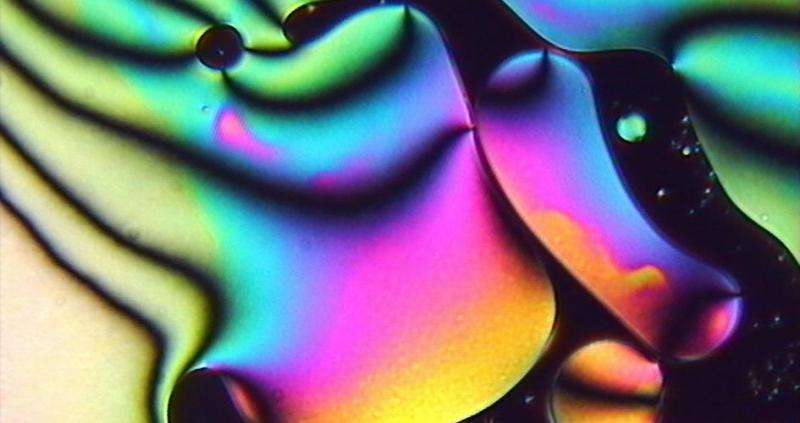Research reveals inner workings of liquid crystals

Liquid crystals are used in everything from tiny digital watches to huge television screens, from optical devices to biomedical detectors. Yet little is known of their precise molecular structure when portions of such crystals interact with air.
New research led by Juan de Pablo, the Liew Family Professor at the Institute for Molecular Engineering, uncovers previously unknown features that develop from the interface between air and certain widely studied liquid crystals.
"Liquid crystals are high-fidelity reporters of molecular events, and their effectiveness relies on controlling their molecular orientation at an interface," de Pablo said. "The precise understanding of this interface gained from our research will enable the design of better liquid crystal sensors and displays."
For the research published Feb. 8 in the Journal of the American Chemical Society, de Pablo worked with a team of scientists at the University of Chicago, including Binhua Lin and Benoit Roux, and at the University of Illinois at Chicago and the University of Wisconsin. They used advanced synchrotron X-rays at Argonne National Laboratory and large-scale simulations to reconstruct the molecular details.
Liquid crystals exist in a state between liquids and solids, allowing them to flow like a liquid but also have some properties of a solid. Their molecules have a rod-like structure that can be organized in various ways. Certain liquid crystals go through phase transitions in response to changes in temperature. In the nematic phase, the rod-like molecules line up in a disorderly yet parallel fashion. In the smectic phase, they also line up in parallel—but in organized layers.
"Our research revealed a number of previously unknown features," de Pablo said. "For example, our findings indicate that the interface imprints a highly ordered, solid-like structure into the liquid crystal material. This structure then propagates well into the bulk of the liquid crystal, particularly for nematic and smectic phases."
The research found similar characteristics between widely studied liquid crystals nematic 4-pentyl-4′-cyanobiphenyl and smectic 4-octyl- 4′-cyanobiphenyl. Both align perpendicularly at the air-liquid crystals interface and exhibit well-defined, surface-induced layers at the interface. When both were heated to a fully liquid phase, only a single layer of structured molecules was formed at the interface between the liquid and the air.
The researchers plan to study the interfaces of liquid crystals and aqueous electrolytes to understand the effects of electrostatic interactions and the liquid crystal orientational ordering.
"These results will be particularly important in guiding the design of responsive liquid crystal interfaces for sensing chemicals and biological molecules," the paper concluded.
More information: Monirosadat Sadati et al. Molecular Structure of Canonical Liquid Crystal Interfaces, Journal of the American Chemical Society (2017). DOI: 10.1021/jacs.7b00167
Journal information: Journal of the American Chemical Society
Provided by University of Chicago



















